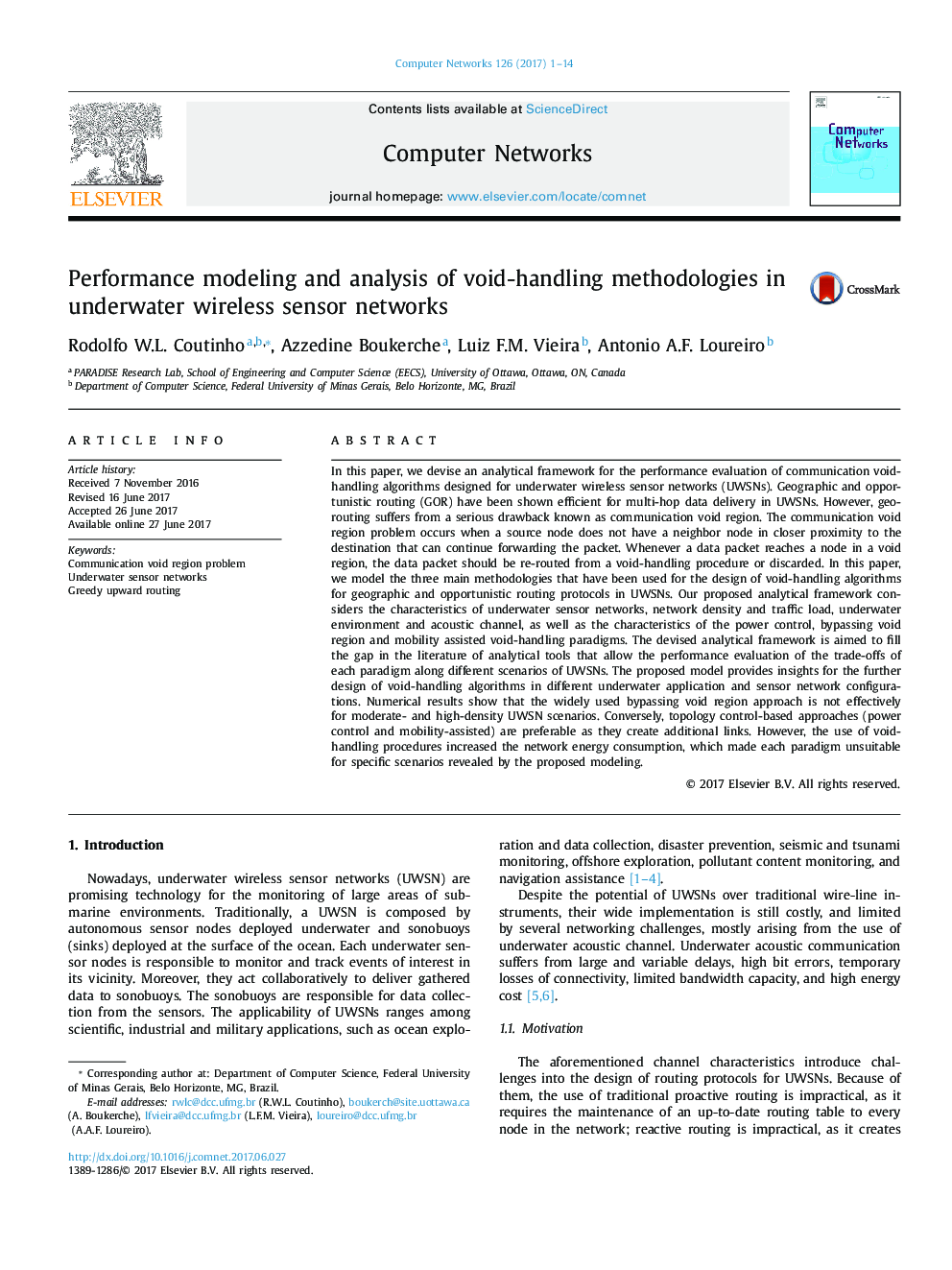| Article ID | Journal | Published Year | Pages | File Type |
|---|---|---|---|---|
| 4954680 | Computer Networks | 2017 | 14 Pages |
Abstract
In this paper, we devise an analytical framework for the performance evaluation of communication void-handling algorithms designed for underwater wireless sensor networks (UWSNs). Geographic and opportunistic routing (GOR) have been shown efficient for multi-hop data delivery in UWSNs. However, geo-routing suffers from a serious drawback known as communication void region. The communication void region problem occurs when a source node does not have a neighbor node in closer proximity to the destination that can continue forwarding the packet. Whenever a data packet reaches a node in a void region, the data packet should be re-routed from a void-handling procedure or discarded. In this paper, we model the three main methodologies that have been used for the design of void-handling algorithms for geographic and opportunistic routing protocols in UWSNs. Our proposed analytical framework considers the characteristics of underwater sensor networks, network density and traffic load, underwater environment and acoustic channel, as well as the characteristics of the power control, bypassing void region and mobility assisted void-handling paradigms. The devised analytical framework is aimed to fill the gap in the literature of analytical tools that allow the performance evaluation of the trade-offs of each paradigm along different scenarios of UWSNs. The proposed model provides insights for the further design of void-handling algorithms in different underwater application and sensor network configurations. Numerical results show that the widely used bypassing void region approach is not effectively for moderate- and high-density UWSN scenarios. Conversely, topology control-based approaches (power control and mobility-assisted) are preferable as they create additional links. However, the use of void-handling procedures increased the network energy consumption, which made each paradigm unsuitable for specific scenarios revealed by the proposed modeling.
Keywords
Related Topics
Physical Sciences and Engineering
Computer Science
Computer Networks and Communications
Authors
Rodolfo W.L. Coutinho, Azzedine Boukerche, Luiz F.M. Vieira, Antonio A.F. Loureiro,
